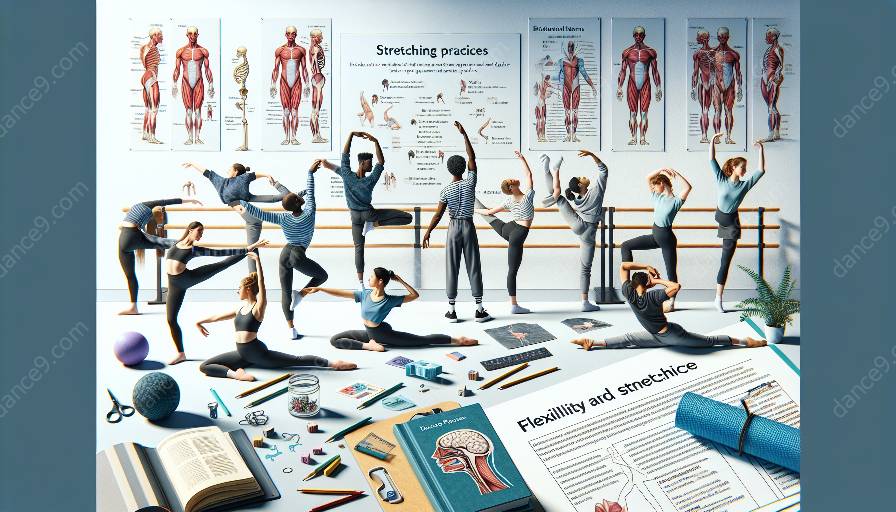Introduction
Dancers rely heavily on their flexibility to perform various movements and techniques. Flexibility not only enhances their physical abilities but also plays a crucial role in their mental and emotional well-being. Stretching is an essential component of a dancer's training regimen, as it helps improve flexibility, prevent injuries, and promote overall health.
Flexibility and Stretching for Dancers
Flexibility is the ability of the body to move freely and easily without any restriction. In dance, flexibility is vital for executing movements with grace, precision, and fluidity. When dancers have a good range of motion and flexibility in their muscles and joints, they can perform the intricate and demanding choreography with ease and elegance.
Stretching is the primary method used to enhance flexibility. It involves deliberately elongating the muscles and tendons, allowing them to become more supple and pliable. Regular stretching exercises aid in developing and maintaining optimal flexibility levels, which is essential for dancers who need to perform extreme movements and poses.
Physical and Mental Health in Dance
Dance is a physically demanding art form that requires strength, stamina, and endurance. Both physical and mental health are crucial for dancers to sustain long and successful careers. Stretching not only improves flexibility but also contributes to overall physical and mental well-being.
Physical Benefits:
- Prevents injuries by increasing the range of motion and decreasing muscle tension.
- Improves posture and alignment, reducing the risk of musculoskeletal imbalances and pain.
- Enhances muscular strength and endurance, allowing dancers to perform intricate movements with greater control.
- Promotes circulation and blood flow, which aids in muscle recovery and reduces fatigue.
Mental Benefits:
- Reduces stress and anxiety by promoting relaxation and mindfulness.
- Boosts confidence and self-esteem through a sense of accomplishment and improved body awareness.
- Enhances focus and concentration, leading to better performance and artistry.
How Often Should Dancers Stretch to Improve Flexibility?
While the frequency of stretching may vary depending on individual preferences, training intensity, and specific dance styles, most dancers benefit from incorporating stretching exercises into their daily routines. For optimal results, dancers should consider a balanced approach that includes both static and dynamic stretching techniques.
Static Stretching:
Static stretching involves holding a stretch position for an extended period, typically 15-30 seconds. This type of stretching is ideal for enhancing overall flexibility and improving muscle length. Dancers can perform static stretches at the end of a dance session or as a standalone flexibility-focused practice.
Dynamic Stretching:
Dynamic stretching involves active movements that mimic the actions and patterns of dance. It helps increase muscle temperature and prepares the body for the demands of dance movements. Dancers can incorporate dynamic stretching into their warm-up routines before rehearsals or performances.
Conclusion
Flexibility and stretching are essential components of a dancer's training and overall well-being. By incorporating consistent stretching routines, dancers can improve their flexibility, reduce the risk of injuries, and maintain peak physical and mental health. Understanding how often to stretch and incorporating a variety of stretching techniques can lead to enhanced performance and longevity in the world of dance.


































